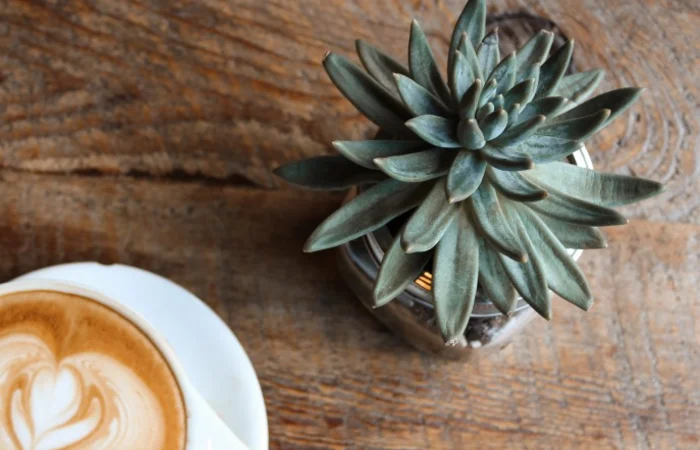Succulent plants have become increasingly popular among plant enthusiasts and casual gardeners alike. Their unique shapes, vibrant colors, and minimal care requirements make them an excellent choice for indoor gardening. However, despite their hardy nature, succulents still require specific care to thrive. This article will provide a comprehensive guide on how to care for succulent plants at home, covering essential aspects such as light, water, soil, temperature, and pest management.
Understanding Succulents
Succulents are plants that have adapted to store water in their leaves, stems, or roots, allowing them to survive in arid environments. They come in various species, including popular varieties such as Echeveria, Aloe, Haworthia, and Sedum. Understanding the characteristics of succulents is crucial for providing the right care.
Types of Succulents
Leaf Succulents: These have thick, fleshy leaves that store water. Examples include Echeveria and Jade Plant (Crassula ovata).
Stem Succulents: These store water in their stems rather than leaves. Cacti are a well-known example.
Root Succulents: These store water in their roots. An example is the Sweet Potato Vine (Ipomoea batatas).
Light Requirements
Succulents thrive in bright, indirect sunlight. Here are some key points regarding their light needs:
Optimal Light Conditions
Direct Sunlight: Most succulents prefer 6 hours of direct sunlight daily. However, some varieties, like Aloe vera, can tolerate partial shade.
Indoor Placement: Place succulents near south or west-facing windows where they can receive ample light. If natural light is insufficient, consider using grow lights.
Signs of Improper Lighting
Etiolation: If your succulent is stretching towards the light and becoming leggy, it may not be receiving enough light.
Sunburn: Brown or crispy patches on leaves can indicate too much direct sunlight.
Watering Techniques
Watering is perhaps the most critical aspect of succulent care. Overwatering is a common mistake that can lead to root rot, while underwatering can cause the plant to shrivel.
Watering Schedule
Frequency: Water succulents every 1-3 weeks, depending on the season and humidity levels. In winter, reduce watering as most succulents enter a dormant phase.
Soil Check: Always check the soil moisture before watering. Stick your finger about an inch into the soil; if it feels dry, it’s time to water.
Watering Method
Deep Watering: Water thoroughly until water drains from the bottom of the pot. This encourages deep root growth.
Avoid Overhead Watering: Water the soil directly rather than spraying the leaves, as water accumulation can lead to fungal diseases.
Soil Selection
The right soil is essential for the health of your succulents. Succulents require well-draining soil to prevent water retention.
Soil Composition
Commercial Cactus Mix: Many garden centers offer pre-mixed cactus and succulent soil, which is an excellent option.
DIY Mix: You can create your own mix using equal parts potting soil, coarse sand, and perlite or pumice to enhance drainage.
Potting Considerations
Drainage Holes: Always use pots with drainage holes to allow excess water to escape.
Repotting: Repot succulents every 1-2 years to refresh the soil and provide more space for growth.
Temperature and Humidity
Succulents are native to warm, dry climates, so they prefer specific temperature and humidity conditions.
Temperature Range
Ideal Temperature: Most succulents thrive in temperatures between 60°F to 80°F (15°C to 27°C). Some can tolerate higher temperatures but should be protected from extreme heat.
Cold Sensitivity: Succulents are sensitive to frost. If you live in a region with cold winters, bring your plants indoors or provide adequate protection.
Humidity Levels
Low Humidity: Succulents prefer low humidity environments. High humidity can lead to mold and rot.
Indoor Humidity: If your home is humid, consider using a dehumidifier or placing succulents in a well-ventilated area.
Fertilization
While succulents do not require frequent fertilization, providing nutrients can promote healthy growth, especially during the growing season.
Fertilizer Type
Balanced Fertilizer: Use a balanced, water-soluble fertilizer diluted to half strength.
Cactus Fertilizer: Alternatively, a fertilizer specifically formulated for cacti and succulents can be beneficial.
Fertilization Schedule
Growing Season: Fertilize during the growing season (spring and summer) every 4-6 weeks.
Dormant Season: Avoid fertilizing in fall and winter when succulents are dormant.
Pest Management
Despite their hardiness, succulents can be susceptible to pests such as mealybugs, aphids, and spider mites.
Identifying Pests
Mealybugs: Small, whihe, cotton-like insects found in leaf axils.
Aphids: Tiny, green or black insects that cluster on new growth.
Spider Mites: Tiny, spider-like pests that cause webbing and leaf discoloration.
Control Methods
Manual Removal: For minor infestations, remove pests manually using a cotton swab dipped in rubbing alcohol.
Insecticidal Soap: Apply insecticidal soap or neem oil for more significant infestations.
Preventive Measures: Keep plants healthy and avoid overcrowding to reduce pest problems.
Propagation Techniques
One of the joys of caring for succulents is the ability to propagate them easily. Here are some common methods:
Leaf Cuttings
Remove a healthy leaf from the plant and allow it to dry for a few days to form a callus.
Place the callused end on well-draining soil and lightly mist it until roots develop.
Offsets
Many succulents produce offsets or “pups” that can be separated and replanted.
Gently remove the offset from the main plant and allow it to dry before planting it in well-draining soil.
Stem Cuttings
Cut a healthy stem and allow it to callus for a few days.
Plant the callused end in soil and water lightly until roots develop.
Conclusion
Caring for succulent plants at home can be a rewarding experience, providing both aesthetic pleasure and a sense of accomplishment. By understanding their specific needs regarding light, water, soil, temperature, and pest management, you can create an ideal environment for your succulents to thrive. With patience and proper care, your succulent collection can flourish, bringing beauty and life to your indoor space. Whether you are a novice or a seasoned gardener, succulents offer a low-maintenance yet satisfying way to engage with nature at home.
Related topics:


